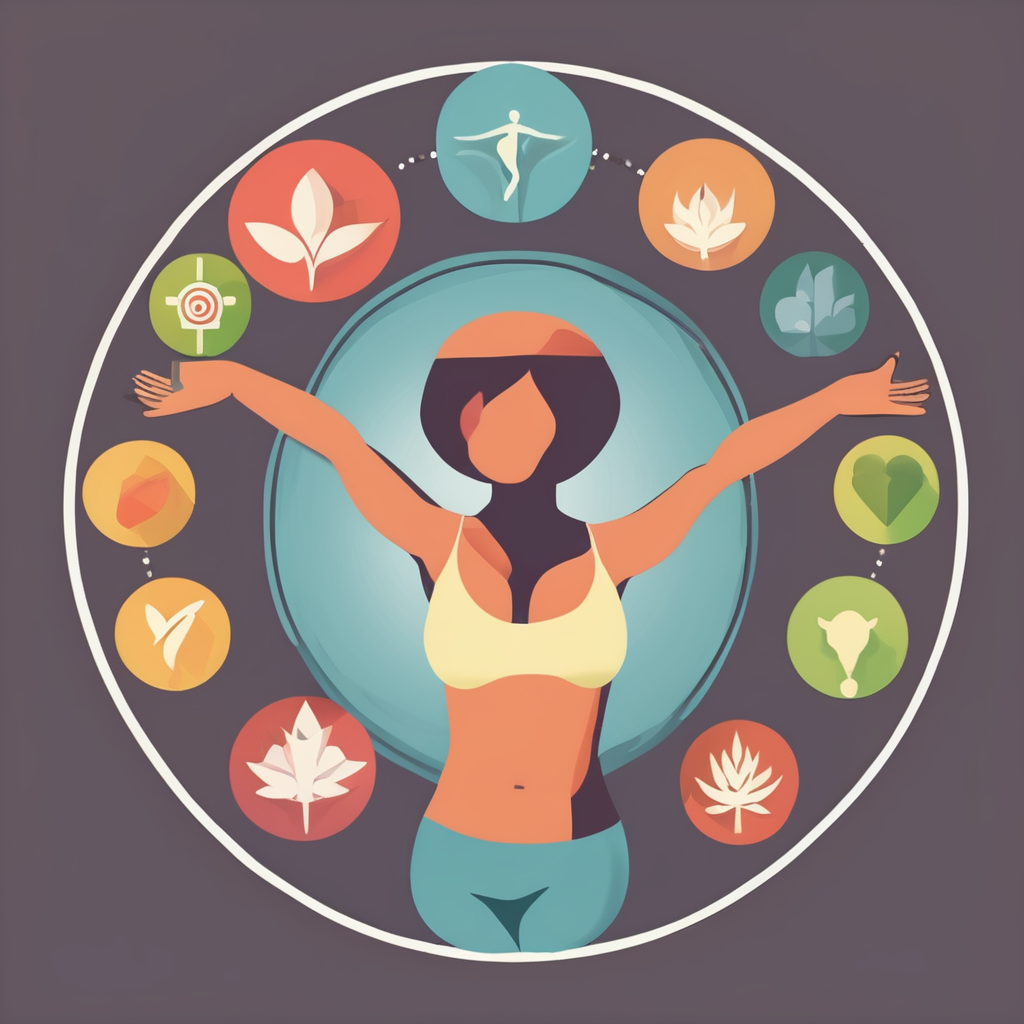The Power of Structured Workout Regimens in Reducing Fall Risk for Seniors Living at Home
As people age, the risk of falls becomes a significant concern, impacting not only their physical health but also their mental well-being and independence. However, there is compelling evidence that structured workout regimens can play a crucial role in reducing this risk. In this article, we will delve into the impact of these regimens on fall risk reduction in seniors living at home, exploring the benefits, types of exercises, and practical tips for implementation.
Understanding the Risk of Falls in Older Adults
Falls are a major health concern for older adults, often resulting in injurious falls that can lead to serious health complications, including fractures, head injuries, and even death. According to various studies, the risk of falls increases with age due to a combination of factors such as decreased muscle strength, impaired balance, and chronic health conditions[5].
This might interest you : Transforming Mental Health Care: Unlocking Access Through Digital Platforms in Underserved Communities
“Physical activity is vital for seniors as it not only impacts their physical health but also has profound effects on their mental well-being,” notes a scholar on the subject. Engaging in regular physical activity can significantly reduce the risk of falls by improving balance, strength, and overall physical fitness[2].
The Benefits of Structured Exercise Programs
Structured exercise programs tailored for seniors are designed to address the specific needs and limitations of older adults. Here are some key benefits of these programs:
Also to see : Unlocking Potential: The Transformative Impact of Adaptive Sports Programs on Individuals with Physical Disabilities
Production of Endorphins for Improved Mood
Regular physical activity releases endorphins, often referred to as the “feel-good” hormone, which act as a natural stress reliever and promote feelings of happiness and contentment[2].
Better Sleep Quality
Exercise is linked to better sleep quality, which is essential for seniors who may experience insomnia and disrupted sleep patterns. Improved sleep contributes to overall mental well-being and physical health[2].
Enhanced Strength and Flexibility
Strength training exercises help maintain muscle mass, improve bone density, and enhance overall physical fitness. This is crucial for preventing osteoporosis and supporting the body’s weight, thereby reducing the risk of falls[3].
Reduced Risk of Falls
Balance exercises, such as tai chi or yoga, improve balance, reduce the risk of falls, and promote overall physical fitness. These exercises enhance stability, improve body mechanics, and increase muscle strength, all of which are vital in preventing falls[3][4].
Types of Exercises for Fall Prevention
When creating a workout regimen for fall prevention, it is essential to include a variety of exercises that target different aspects of physical fitness.
Balance Exercises
- Single Leg Stand: Stand behind a chair with your feet hip-width apart, holding onto the back for support. Slowly lift one foot off the ground, balancing on the other leg. Hold for 10-30 seconds, then switch legs[3].
- Heel-to-Toe Walk: Stand with your knees slightly bent and position the heel of one foot just in front of the toes of the other foot. Take a step forward, placing the heel of your front foot directly in front of the toes of your back foot. Repeat for 10-20 steps, using a wall for support if needed[3].
Strength Training
- Bodyweight Squats: Stand with feet shoulder-width apart, using a chair or counter for balance if needed. Slowly lower your body as if sitting back into a chair, keeping your chest up and knees behind your toes. Push through your heels to stand back up. Aim for 10-15 repetitions, increasing as you get stronger[3].
- Step-Ups: Use a sturdy step or the bottom stair in your home. Step up with your right foot, bringing your left foot to meet it. Step back down and repeat, leading with the left foot this time. Do 10-15 repetitions on each side[3].
Cardio Exercises
- Walking: Walking is a low-impact exercise that can help improve cardiovascular health, increase energy levels, and promote weight management.
- Swimming: Swimming is another low-impact exercise that is gentle on the joints and can be modified to suit individual fitness levels[3].
Creating a Safe and Effective Exercise Regimen
To ensure that the workout regimen is both safe and effective, several steps should be taken:
Consult with a Healthcare Provider
Before starting any new exercise program, it is essential to consult with a healthcare provider to discuss any health concerns, medications, or physical limitations[3].
Choose Low-Impact Exercises
Low-impact exercises, such as walking, swimming, or cycling, are ideal for seniors as they are gentle on the joints and can be modified to suit individual fitness levels[3].
Start Slow
Begin with short, gentle exercises and gradually increase the duration and intensity as fitness levels improve. This approach helps in avoiding injuries and ensuring sustainability[3].
Incorporate Balance Exercises
Balance exercises, such as tai chi or yoga, can help improve balance, reduce the risk of falls, and promote overall physical fitness. These exercises should be a core component of any fall prevention regimen[3][4].
Evidence-Based Fall Prevention Programs
Several evidence-based programs have been designed to help seniors reduce their risk of falls.
A Matter of Balance
This is an eight-week structured group intervention designed to reduce the fear of falling while increasing activity levels among older adults. Participants learn to view falls as controllable, set realistic goals, and make environmental changes to lower fall risks. The program incorporates exercises aimed at enhancing strength and balance, contributing to the overall improvement of participants’ physical capabilities[5].
| Program Duration | Focus Areas |
|---|---|
| 8 weeks | Fear reduction, activity levels, strength, balance |
Benefits of Balance and Strength Training
Here is a detailed look at the benefits of balance and strength training exercises:
| Benefits of Balance and Strength Training | Impact on Fall Prevention |
|---|---|
| Improved stability | Reduces risk of falls |
| Enhanced coordination | Increases reaction times |
| Increased muscle strength | Supports better body mechanics |
| Greater confidence in movement | Encourages independence |
Social and Community Aspects of Exercise
Engaging in physical activity is not just about individual health benefits; it also has significant social and community implications.
Social Engagement
Exercise facilitates social engagement for seniors through group activities like walking groups, fitness classes, or gardening clubs. Maintaining strong social ties is crucial for seniors to feel a sense of purpose, combat feelings of loneliness, and prevent depression[2].
Community Support
Group fitness classes provide social support, motivation, and accountability. Programs like “A Matter of Balance” emphasize the importance of community support in promoting safety and independence among seniors[5].
Practical Tips for Implementation
Here are some practical tips for seniors and their caregivers to implement a structured workout regimen:
- Schedule It: Incorporate exercise into your daily routine, just like any other essential activity.
- Find a Buddy: Exercising with a friend or family member can make the experience more enjoyable and help in staying motivated.
- Use Home Resources: Utilize home-based exercises that do not require special equipment, such as bodyweight squats or heel-to-toe walks.
- Seek Professional Help: Consult with a healthcare provider or a fitness professional to tailor the exercise program to your specific needs and abilities.
Structured workout regimens are a powerful tool in reducing the risk of falls among seniors living at home. By incorporating balance exercises, strength training, and cardio activities into their daily routine, seniors can significantly enhance their physical fitness, mental well-being, and overall quality of life. It is crucial to approach these programs with a holistic mindset, considering both the physical and social aspects of exercise.
As one scholar aptly puts it, “Engaging in regular physical activity can significantly decrease the risk of falls among elderly individuals, promoting independence, confidence, and a fulfilling lifestyle.”
By taking the first step towards a structured exercise regimen, seniors can take control of their health and well-being, ensuring a safer and more active life as they age.











